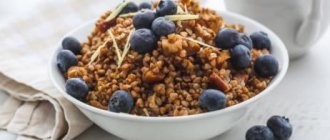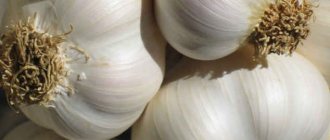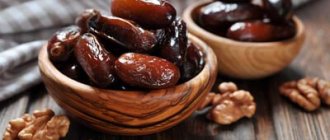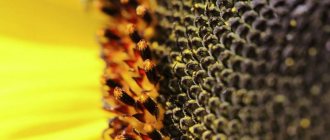Composition of quince
In Ancient Greece, quince was considered a symbol of fertility. According to legend, it was the quince fruit that Paris presented to the goddess of love Aphrodite. Many centuries later, quince was called the apple of discord - the same fruit that became the reason for the famous Trojan War.
Quince contains the following beneficial substances:
- vitamins: A, B, C, E, PP;
- mineral elements: potassium, iron, copper, phosphorus, calcium;
- fructose and glucose;
- pectins;
- tannins;
- organic acids: citric, malic, tartronic.
Thanks to its unique properties, quince was also known in medieval Europe. In many countries from Italy to Sweden, it was believed that quince fruits should be consumed by young women who wanted to get married and give birth to healthy children. Presenting this sweet fruit as a gift was a kind of declaration of love.
Quince in the diet of a nursing mother
Due to the tannins contained in quince pulp, it is not advisable to eat it during breastfeeding. Tannins pass through breast milk to the baby, causing bloating, painful colic, and problems with bowel movements.
Quince during breastfeeding is most often included in the list of prohibited foods. Some experts allow it to be used during breastfeeding in small quantities after heat treatment, but not earlier than the 4th month after birth. Nevertheless, in order to avoid unpleasant sensations in the baby, it is better not to include quince in a nursing mother’s diet.
Important! The answer to the question whether quince can be used while breastfeeding is categorically negative if the baby suffers from constipation.
Useful properties of quince
The aromatic fruits of quince have served as a medicine since ancient times. This sweet exotic fruit has a number of beneficial properties:
- activates the digestive tract;
- has a beneficial effect on the immune system;
- has a diuretic and anti-inflammatory effect;
- stimulates hematopoiesis and prevents the development of anemia;
- improves the condition of skin and hair;
- increases the overall tone of the body;
- improves mood;
- stimulates memory and attention;
Ripe quince has a pronounced antiemetic effect . This property of the exotic fruit will be useful for the expectant mother in the early stages of pregnancy. A few slices of quince for breakfast will help cope with toxicosis, eliminate nausea and vomiting, and reduce salivation. Freshly squeezed quince juice increases appetite, which will also benefit a pregnant woman.
The aromatic fruit has a beneficial effect on the functioning of the digestive tract. Quince stimulates the production of enzymes, improves food digestion and facilitates the removal of metabolic products from the body. Fresh fruits, as well as quince juice, are used for pathologies of the gallbladder and biliary tract, some diseases of the liver, stomach and intestines.
Quince will be beneficial for pathologies of the urinary system. The exotic fruit has a pronounced diuretic and mild antiseptic effect. In combination with medications, quince helps to cope with inflammatory diseases of the kidneys, bladder and urethra.
Freshly squeezed quince juice (pure or diluted 1:1 with water) helps fight swelling by removing excess water from the body. Pregnant women suffering from anemia will benefit from sweet fruits. The high iron content makes quince the most desirable delicacy in the second half of pregnancy, during a period of increasing stress on the cardiovascular system of the expectant mother.
Quince is rich in vitamin E, an excellent natural antioxidant. When consumed regularly, quince helps maintain skin turgor and elasticity and gives a healthy shine to hair. Products based on these fruits are used in cosmetology. Various oils, masks and creams are prepared from quince pulp to care for oily skin.
Quince is an excellent remedy to help fight depression and fatigue during pregnancy. The aromatic fruit keeps the body in good shape, improves mood, gives strength and gives a boost of energy for the whole day. Quince has a beneficial effect on the functioning of the nervous system, improves memory and attention, and also prevents the development of insomnia in later stages.
The unique properties of quince allow it to be used as a means of stimulating the immune system. Freshly squeezed juice and pulp help the body fight infection during colds and flu, help eliminate viruses and speed up recovery. In case of exacerbation of various chronic diseases, quince can also be used to maintain the overall tone of the body. Quince juice and fruits help to recover from stress, strong emotional experiences and physical activity.
What are the benefits of quince during pregnancy?
Quince (also known as “pseudo-pear” and “false apple”) is a fragrant fruit that looks like a mixture of pear and apple. Quince has a yellow-green dense skin, covered with fluff, under which there is a hard, low-juicy pulp. If you cut the fruit in half, you can see the seeds, like an apple. By the way, they, like apple ones, contain the substance amygdalin, which is why many doubt whether expectant mothers can eat quince.
Some experts claim that quince is allowed during pregnancy and its use will have a beneficial effect on the health of the woman and her child. Of course, we are talking about eating exclusively the pulp, without seeds.
The fruits are considered local to us; they are grown in the gardens of our country, which means they are picked ripe, and are rarely treated with chemicals to speed up ripening or increase shelf life. In addition, the vitamin and mineral composition of the fruit is rich and varied, and the beneficial substances present in quince are necessary for the normal growth and development of the human body. To understand whether quince is useful for pregnant women, it is worth learning about its chemical composition and nutritional value.
Interesting: there is an ancient belief that says that quince was given to a pregnant woman by the goddess of love. The shape of the fruit resembles a heart, and the benefits of quince for pregnant women are invaluable.
Beneficial features
Not many people know how quince is useful during pregnancy. Meanwhile, it contains a lot of folic acid - the main women's vitamin. Taking vitamin B9 (folic acid) during gestation is the prevention of fetal malformations.
Folic acid is necessary for the proper formation of the neural tube of the fetus, it is involved in the process of cell division, hematopoiesis, and is needed for the development of all tissues and organs. Folic acid is of particular importance in the first trimester of pregnancy, when the formation of the baby’s main organs occurs.
This is where the beneficial properties of the fruit just begin. Quince contains:
- vitamin B1 – is needed for the normal development of the child’s brain and nervous system, promotes the proper formation of muscle tissue, and for the expectant mother it prevents pain in the lower back and legs, especially in the last weeks of pregnancy;
- vitamin B2 - its sufficient intake into the body of a pregnant woman is the prevention of preeclampsia, as well as various skin diseases, including seborrheic dermatitis;
- vitamin B6 – promotes the absorption of proteins, fats and carbohydrates, alleviates the symptoms of toxicosis in women;
- vitamin A – is represented by beta-carotene (this means that in the form of retinol it does not accumulate in the body and does not pose a threat to a woman’s health, is not teratogenic and is not toxic to a child), is necessary for visual acuity, beauty of skin and hair;
Precautionary measures
Quince is an exotic fruit. In some women, fragrant fruits can cause an allergic reaction in the form of a skin rash or Quincke's edema. Often, for the first time, such a reaction appears only during pregnancy due to a sharp change in hormonal levels. Expectant mothers who are prone to allergies should not get too carried away with exotic fruits, especially in the late stages of pregnancy before the upcoming birth. Eating quince during lactation can lead to the development of allergies in a child.
It is not recommended to eat quince under the following conditions:
- peptic ulcer of the stomach and duodenum;
- enterocolitis of various origins;
- constipation
Fragrant fruits disrupt the functioning of the vocal cords, lead to throat irritation and provoke coughing attacks. Quince should not be carried away by women performing on stage and working with large audiences.
How to eat quince for its benefits
Initially, you need to select high-quality, ripe fruit, as evidenced by a uniform yellow color, absence of damage and a pleasant aroma. If you plan long-term storage, it is better to pay attention to large fruits.
Not everyone will like quince in its raw form, since the pleasant aroma is combined with a specific viscosity and acidity, which for some pregnant women is a salvation from toxicosis. More often, the fruits are used for making drinks, including tea, compotes, fruit drinks, as well as for making homemade marshmallows, preserves, marmalade and other sweet treats.
During prolonged heat treatment, some of the beneficial substances are lost, so for maximum benefit, expectant mothers can consider recipes with the least thermal impact on the fetus. To prevent health problems, you should adhere to the following recommendations:
- You need to choose quince without plaque, rot, or damage, otherwise there is a risk of bacteria entering the body.
- Beforehand, the fruit is thoroughly washed or soaked in water for 10-15 minutes to remove possible reagents that are used to treat fruit for storage.
- Quince seeds are removed; when fresh, they are unsuitable for food, as they contain hydrocyanic acid. It is advisable to get rid of the peel.
- Even if there has been no negative reaction to quince before, you need to start with a small amount.
- The approximate daily intake is 200 grams of peeled fruit. Approximate proportions are calculated if the “false apple” is used in the form of preserves, jams or desserts.
Despite the exceptional usefulness of quince, the amount of fruit and the rules of consumption must be regulated. Only then can you safely and tasty support the body during pregnancy without harming the health of the unborn baby.
oranges during pregnancy
Method of use
The quince norm for pregnant women is 1 fruit every 2-3 days. If you are prone to allergies, quince should be eaten no more than once a week.
Not every pregnant woman will like fresh tart quince fruits. They are usually consumed boiled or baked. You can also make tasty and healthy juice from quince, add the fruit to various desserts, sauces and fruit salads. Due to its specific taste, quince is often used as a side dish for meat dishes.
When preparing quince, you should not grind the seeds - they contain the dangerous poison amygdalin. Quince fruits can be dried, dried and canned only after first removing the seeds from them. Dried and dried fruits should be stored in a cool, dark place for no more than 6 months.
Quince during pregnancy
While expecting a child, a woman can rediscover quince and become convinced that it is not only a delicious dessert, but also a healing remedy for many painful conditions.
Benefit
During pregnancy, the expectant mother's blood volume almost doubles. Quince in this sense will come in handy, because... its constituent iron and copper are involved in hematopoiesis . Eating it will help prevent anemia.
The percentage of pregnant women susceptible to allergies is steadily increasing. Quince helps reduce the risk of allergic reactions because it acts like a sensitizing drug.
Thus, women whose bodies cannot tolerate, for example, strawberries or raspberries, are recommended to eat quince to replenish the body's need for vitamins and microelements.
Moreover, the unpleasant effects of toxicosis in the first half of pregnancy can be significantly reduced if you eat a couple of pieces of boiled or baked quince in the morning on an empty stomach.
This allows you to get rid of the nausea that accompanies many pregnant women in the first three to four months.
Since all the body’s forces are aimed at developing the fetus, the body’s own immunity drops, and the gums may begin to bleed. Eating quince helps prevent bleeding gums .
Popular wisdom says that if the mother regularly ate quince during pregnancy, the baby will be healthy, beautiful and smart.
Harm
Those who have ever eaten raw quince know that its taste is somewhat tart and astringent. In small doses, it is not capable of causing any harm to the body.
However, women suffering from laryngitis or pharyngitis are not recommended to overuse this aromatic delicacy . The vocal cords, already affected by the disease, may become even more inflamed; your voice will become hoarse and your throat will hurt.
The same applies to women with sluggish intestines: quince can cause gastrointestinal problems and cause constipation .
Indications
Bronchitis, tracheitis, conjunctivitis, burns . Vitamin C, which quince is rich in, automatically turns it into an effective remedy for cough, bronchitis, and inflammation of the conjunctiva.
For burns, it is recommended to lubricate the affected areas with the juice of fresh fruits.
Edema during pregnancy. An infusion of finely crushed quince leaves and twigs has a diuretic effect and helps relieve swelling, which often appears in the third trimester of pregnancy.
Stabilization of blood pressure and blood sugar levels . During pregnancy, blood pressure often “jumps”; Blood glucose levels may increase.
For this purpose, you should take 20 drops of quince tincture daily (infuse 100 g of fresh quince leaves in 100 g of vodka for seven days).
Gastrointestinal problems . Expectant mothers often experience digestive problems, flatulence, a feeling of fullness in the stomach, and discomfort in the right hypochondrium.
Regular consumption of boiled and mashed quince pulp will help reduce the severity of unpleasant symptoms.
Anal fissures . Many pregnant women experience worsening hemorrhoids, and for some, this disease first manifests itself while they are expecting a child.
In such cases, fresh quince juice, which has an anti-inflammatory, astringent, and analgesic effect, will help.
Angina . Frequent gargling with an aqueous infusion of quince leaves has allowed many women to cure a sore throat without antibiotics.
Deterioration of the condition of the skin, nails, hair . For thousands of years, quince has been an affordable remedy for women to improve their complexion.
Even today, raw quince juice is used to remove freckles and age spots, and prepare lotions and balms.
It makes skin with enlarged pores pleasantly matte and silky. Rinsing your hair with a decoction of twigs and leaves strengthens the roots and gives your hair a beautiful shade.
A decoction of the seeds helps (with regular use) to get rid of dandruff.
Contraindications
Perhaps the only contraindication to the use of quince by pregnant women is the tendency to constipation . The expectant mother should not suffer from constipation, because... they can disrupt the normal course of pregnancy.
If there are no problems with daily bowel movements, quince can be eaten at least three times a week . It is hypoallergenic and fully provides the body with vitamins and minerals.
How soon can pregnancy be possible after taking birth control pills? Let's ask the doctor!
Pregnancy test with iodine: how to do it? Details are here.
And here is where to start https://puziko.online/planirovanie/pl-info/planirovanie-beremennosti-s-chego-nachat.html pregnancy planning.
Don't forget to keep it in moderation
Despite the enormous benefits of this fruit, quince, like any other product, must be consumed wisely and in moderation. To provide your body with all the necessary nutrients, during pregnancy it is recommended to include quince in your diet three times a week, 1-2 fruits. At the same time, you must not forget about its diuretic properties and try not to use it in the evening. During pregnancy, especially in the early stages, consuming quince will help ensure the birth of a well-developed, healthy baby.
By the way, the fruit has a fairly low calorie content (57 kcal per 100 g of product), so eat it boldly and don’t be afraid to gain excess weight.
Did you know? The fruits of cultivated quince trees reach two kilograms.
General characteristics of quince
Quince is a bright yellow fruit, shaped like a large pear. However, if you compare this fruit with a pear, there is still a difference - it is not consumed raw, and it is not much larger in size. The weight of a ripe quince fruit reaches 1 kg 500g.
If we talk about its medicinal properties, then for decades it has been used as a folk remedy to help heal various ailments.
Eating quince raw is not only impossible, but also harmful, because its pulp is very hard and has a bad effect on the gastrointestinal tract. Therefore, if you want to enjoy its taste, use it in the form of jam, compote or preserves.
Precautions and contraindications
As we found out, quince is a healthy product. It can be consumed in almost any form. But there is one small precaution. The fact is that quince seeds contain the toxic substance amygdalin, otherwise called “hydrocyanic acid”. This substance can cause poisoning, so all seeds must be removed before use.
No contraindications as such were also found, with the exception of constipation and individual intolerance. But you should not neglect the use of quince. If you follow all the recommendations and prepare the fruit correctly, then in the end your mother will receive a tasty and healthy treat, and her family members will be happy to try something new.
A couple of recipes
To determine in what form it is most convenient and tastiest for you to eat quince, you can evaluate different options for its preparation:
- Quince compote. This method of preparation will preserve the maximum amount of vitamins and other nutrients. It can be prepared from quince alone or add other fruits and berries (for more information about what fruits pregnant women can eat, read the article Fruits during pregnancy >>>). The fruit should be cut into small pieces and poured into sugar syrup. It is enough to cook it for 10-15 minutes;
- Baked with honey. In this form, the fruit will contain the largest amount of pectin, which helps improve digestion. You need to remove the core from the fruit and pour a spoon of honey over the quince. Bake in the oven for 15 minutes (about whether honey is ok for pregnant women, read the article Honey during pregnancy >>>);
- The sauce is an excellent addition to meat dishes. To prepare it, you need to grate the fruit and mix it with your favorite spices. Serve with meat dishes. Due to the acid content, such a sauce will promote faster digestion of meat;
- Marmalade. This delicacy retains all the beneficial substances virtually unchanged.
To prepare it, you will need a kilogram of quince, which must be peeled and cored. Cut into small cubes and place in a saucepan. Sprinkle half a glass of sugar on top. Boil for three minutes, cool, add half a glass of sugar again and boil again. After cooling, repeat the procedure again.
By trying new recipes, you are sure to find something for yourself. Preparing all these dishes will not require much time from you, and the result is very tasty and healthy.
To summarize the article, we can say that quince is a very valuable product for you during pregnancy. If there are no contraindications that have already been mentioned, you can safely include this fruit in your diet.
Pregnant women, more than ever, need foods rich in beneficial microelements: minerals and vitamins. However, at the same time, expectant mothers become very picky about food; they are concerned not only with the taste of food, but also with its effect on the body of their baby. And it's not in vain! After all, the health and development of the fetus largely depends on the mother’s nutritional lifestyle. Even such healthy products as fruits cause a lot of controversy and suspicion. But fortunately, there is a fruit that will definitely not harm your child - quince. However, you need to know about all the nuances of its use, and also take into account contraindications to its use during pregnancy. This is what we will talk about today.
Types of quince
The scientific classification of quince has often changed due to the development of botany, since this fruit has been known to people since ancient times. For a long time it was classified as a member of the Pear genus, like an apple and a rowan.
Later it was allocated to a separate genus Japanese Pear, which included three species: common quince, Japanese quince and Chinese quince
. But due to the fact that there were many significant differences between these three varieties of quince, all three species began to be considered separate genera already in 1822.
Common quince is a tree or shrub with a height of 1.5 to 6 meters. Its fruit is considered a lemon-colored false apple, less often dark yellow, with a tart, astringent taste. Common quince fruits ripen in September-October. Well suited for preservation, especially for making jam and marmalade.
Japanese quince is a shrub reaching no more than 3 meters in height. The fruits are almost spherical, yellow apples with brown seeds. They can also be eaten, but they are tougher than the fruits of the common quince.
Chinese quince is a record holder among the “sisters”: trees of this quince species reach 10-18 m in height. Their crown is dense, the trunk is most often curved.
The fruits are oval apples weighing up to 1.5 kg, with a strong pleasant smell. Raw they taste very sour and hard, so it is better to cook jam or compotes from them. Another distinctive feature of this type of quince is that the fruits contain a high concentration of essential oils.
, which is why the fruits feel oily to the touch.
What is this fruit
Surely you have seen a quince at least once in your life. This is a bright southern fruit with a pleasant aroma and delicate taste. It grows on trees and prefers warm climates and sandy soil. You can eat quince in any form, but fresh it is not very tasty. It makes excellent jam, jam, marmalade and candied fruits.
Caucasian and Asian cuisine prefer to use the fruit as a side dish, especially with meat dishes. Let's figure out whether quince is ok during pregnancy - the benefits and harms of this fruit.
Contraindications and harm
Constipation is a contraindication to consuming the fruit during pregnancy, since it contains a large amount of tannin “fixing” substances. Excessive consumption of these fruits can negatively affect the ligaments, as it has strong astringent properties. You should try not to overuse it, especially if you often strain your voice, for example, for professional purposes.
Eating quince during pregnancy can bring not only benefits, but also harm. Although it is considered a hypoallergenic product, quince is extremely rare, but can cause allergic reactions, so for the first time it is better to eat very little and watch your body.
Fresh fruits can irritate the mucous surface of the gastrointestinal tract, so they are not recommended for use if you have stomach problems.
Important! In traditional medicine recipes, quince seeds are recommended for use for constipation, flatulence, colitis and cough.
Can quince cause harm?
Is there any harm to quince during pregnancy? Like any product, quince must be consumed correctly, especially if you have any concomitant diseases.
This fruit has a very interesting taste - sweet-sour, astringent. Therefore, it can cause irritation of the mucous membranes of your mouth, and its ability to consolidate stool can lead to the development of constipation - but this is only if you consume the fruit in unlimited quantities.
So, when should you not indulge in this product? If you have:
- Sores or ulcers on the oral mucosa;
- Chronic gastritis;
- Stomach ulcer;
- Tendency to constipation. Read more about constipation during pregnancy >>>
In this case, it is better to refuse this fruit and replenish vitamins and minerals with some other products. If nothing of the sort bothers you, you can safely eat the southern fruit, but in moderation.
Quince as a medicine
We all know that it is impossible to take medications during pregnancy, as this will have a negative impact on the child. However, you also need to be careful with traditional medicine, because not all plants are harmless. It is because of this that treatment must be approached responsibly, choosing only the most effective and at the same time safe means. So, for example, many doctors recommend treating acute respiratory infections and coughs with quince grains. Also, a decoction of them perfectly helps with inflammation, bronchitis, eye diseases, burns and uterine bleeding.
You should also take into account the fact that quince contains a lot of iron, which the female body needs during pregnancy.
Cooking quince at home - two recipes
Quince marmalade
For one serving you will need 300 g of quince and 100 g of sugar. Wash the quince thoroughly under cool water, then cut it into two parts and remove the core. Cut the fruit, ready for further preparation, into small cubes. Place the chopped fruit on the bottom of the pan. Add a small amount of water and sugar. Place over low heat and bring to a boil. Remove from heat and let stand for 10 minutes. Afterwards, put it back on the fire and bring to a boil. Do the same thing again - only 3 times.
The dish is ready!
Quince jelly
To prepare the jelly, you will need 500 g of quince, 200 g of sugar, 1.25 glasses of water. Wash the quince thoroughly under cold water and cut into slices. There is no need to remove seeds from the fruit. Place the chopped wedges in a saucepan and cover with water. Place the pan over low heat and cover with a lid. You can remove the pan from the stove when the fruit is completely softened. After complete readiness, strain the mixture through gauze or bandage (without squeezing). Pour the resulting juice into a saucepan and add sugar, cook until tender. Pour the finished broth into a convenient container and leave to cool, and when the dish is barely warm, put it in the refrigerator until it hardens completely.
Bon appetit!
Quince leaves: medicinal properties
If you manage to find a fruit with leaves, do not rush to throw away the greens. The leaves can also be used for medicinal purposes. You will be surprised how many problems can be solved with the help of this seemingly unnecessary greenery.
Benefits of quince leaves:
- A decoction of quince leaves helps with sore throat and oral diseases. To get rid of such ailments, you need to rinse with this infusion.
- You can also use a decoction of quince leaves to get rid of sweaty feet and fatigue. To do this, you need to boil 5 tablespoons of quince in half a liter of boiling water. When the broth has cooled, use it for foot baths.
- Quince leaf tea will help you normalize blood pressure and sugar. To prepare this remedy, brew a teaspoon of leaves in a glass of boiling water.
As you can see, quince leaves can bring a lot of benefits. To preserve the greens of this fruit, you can dry it in the sun.











